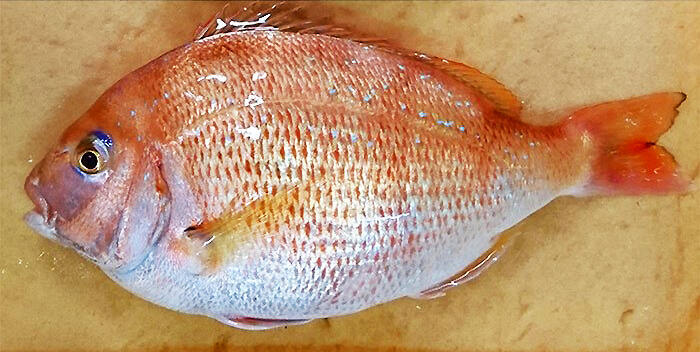Regional Fish Institute, Ltd. aims to transform the Japanese fishery industry by combining breeding improvement for marine products and smart aquaculture. Although no major company has entered this arena, Regional Fish Institute, Ltd. is taking a bold step in cultivating the market as an open innovation university venture involving several universities and business companies. This move is expected to create new markets that are slated to grow significantly in the future.
Rearing more regional fish varieties through new fish breeds
Japanese marine products have always been considered "natural" delicacies while rarely are its agricultural and livestock products called so. This is because marine products have not specifically been bred and cultivated and conventional methods require decades for improvement to be seen in marine products. While agriculture and livestock breeding has a history of more than 10,000 years, the history of aquaculture is a recent phenomenon, barely 50-100 years old. This considerable difference shows that not much time has been devoted to the development of new breeds of marine products. As a result, in Japan, only the "Kindai red sea bream" has been cultivated as a breed. As is the case with agricultural and livestock products, it is possible that cultured marine products will be more of a delicacy than the native breed, offering scope for improvement in the future. However, the challenge lies in the fact that it takes as long as 30 years to develop new varieties of fish using conventional methods.
Nevertheless, Regional Fish Institute Ltd. has managed to successfully develop new breeds of aquatic products (marine organisms) in as little as 2-3 years by using genome editing technology. The company is named "Regional Fish" to vitalize regions by breeding varieties of fish that represent regional characteristics. In other words, to popularize "local fish" varieties. It is a venture company that originated from a joint research venture conducted by Kyoto University and Kindai University, where they combine breeding technology, such as genome editing technology, possessed by Kyoto University, and complete culture technology, possessed by Kindai University. They currently have various development projects for marine products in the pipeline and have succeeded in producing new breeds. First, they plan to start selling red sea bream for which they have achieved mass production.

Aiming to grow through open innovation
With the Japanese fisheries market shrinking, the company realized that the domestic fisheries field is a cooperative area, rather than a competitive area, and that the domestic players should work together to compete with overseas players. Thus, since their founding, they have promoted R&D and business development through collaboration, that is, open innovation, with companies possessing technology, academia, such as research institutions, and local governments.
Together with academia, such as universities and research institutions, they are conducting joint research in the field of genome editing. Since genome editing is a technology that was developed overseas, domestic academia has limited cases of applying this technology to marine products. Further, the company believes that joint development and commercialization would be more efficient than setting up a venture company at individual research institutions, and so they began recruiting their peers at other institutions. Presently, collaboration with more than 10 research institutions is underway.
The company promotes collaboration in the field of smart aquaculture with companies possessing such know-how. The production of new breeds is expected to reduce costs by improving efficiency or elevating selling prices by increasing added value, which will improve the profits of companies engaged in aquaculture. However, considering that the number of fishery companies has decreased to about one-third over the last 30 years, it is important to ensure labor-saving production for the actual cultivation of new breeds. Further, the performance of new breeds can be maximized by breeding them in an optimal aquaculture environment. Therefore, the company has partnered with more than 20 companies, including those possessing the requisite technology, and those involved in aquaculture, to develop labor-saving production using AI/IoT and improve production efficiency through recirculating land-based aquaculture systems. In particular, they have partnered with Ebara Co., Ltd., for developing recirculating land-based aquaculture systems. Through in-house recruitment, Ebara Co. has recruited members from more than 45 applicants to the company and formed a team specializing in land-based aquaculture. Through motivation, the team has been able to respond quickly and to actively provide ideas and technologies, thus strongly promoting collaboration and joint research.
To further strengthen collaboration through joint research and business partnerships as mentioned above, a total of 200 million yen was invested by NTT DOCOMO Ventures, Inc. (in cooperation with the NTT Group), Ebara Co., Ltd., and other companies as seed capital in December 2019, following the founding of Regional Fish Institute Ltd. in April of the same year. They also received a total investment of 400 million yen from Ube Industries, Ltd. and other companies as Series A Finance in August 2020. Thus, these companies are gradually moving to establish capital and business partnerships, enabling medium to long term collaboration.
What is the structure of an R&D-type venture company originating from a university?
In a university-originated venture company, university researchers often serve concurrently in management and research and development. Working merely on research and development often tends to delay a company's entry into the market. Considering the structure of the project, research and development often does not proceed as scheduled; sometimes, long-drawn development plans are already established before entering the market. With funding from venture capital, mainly Beyond Next Ventures Inc., the company aims to proceed to listing in as short a period as five years after founding, and most management and research members are working full-time toward this goal. This has resulted in internal and external pressures to achieve the originally planned rapid development, and research and development is progressing in a state of "good crisis." This rapid progress in research has led to success at an early stage. They company believes that a structure that creates this "sense of urgency" is necessary for university-originated R&D-type venture companies to remain competitive.

Tadanori Umekawa
President and CEO, Regional Fish Institute, Ltd.




